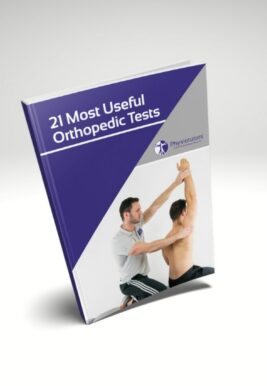Learn
Hip Osteoarthritis Diagnosis | Signs & Symptoms of Hip OA
The diagnosis of osteoarthritis has often been based on radiographic appearance of the joint space according to the criteria of Kellgren and Lawrence rather than clinical features. However, recent research has shown that radiographic imaging and the amount of pain and limitation a patient experiences does not have as strong of a correlation as once believed. More so, central sensitization and psychosocial factors might play an important role in explaining which patients with radiographic osteoarthritis experience pain and which don’t.
The clinical classification criteria by Altman et al. (1991) have a sensitivity of 86% and a specificity of 75%, which is why we give them a moderate clinical value.
The clinical classification criteria contain the presence of hip pain plus the following items:
- Hip internal rotation range of motion of fewer than 15 degrees.
- Hip flexion range of motion of 115 degrees or less.
OR HIP PAIN plus:
- Hip internal rotation range of motion of 15 degrees or more
- Pain on hip internal rotation testing
- Morning stiffness of fewer than 60 minutes (which is an important factor to distinguish osteoarthritis from rheumatoid arthritis in which case stiffness is usually lasting longer than that)
- Age older than 50y due to the fact that the prevalence increases with increasing age with a peak around 78 to 79 years.
As mentioned earlier, radiographs alone do not define the clinical syndrome of osteoarthritis. Kim et al. (2015) showed in two big cohorts that only 20% of hips with radiographic hip osteoarthritis were frequently painful. This is a good message, as it opens up possibilities for an effective treatment including load management, strengthening, mobility exercises, and maybe more importantly proper patient education and explanation of how psychosocial factors might contribute to the patient’s individual pain experience.
21 OF THE MOST USEFUL ORTHOPAEDIC TESTS IN CLINICAL PRACTICE

Other assessments for hip osteoarthritis are:
References
Like what you’re learning?
BUY THE FULL PHYSIOTUTORS ASSESSMENT BOOK
- 600+ Pages e-Book
- Interactive Content (Direct Video Demonstration, PubMed articles)
- Statistical Values for all Special Tests from the latest research
- Available in 🇬🇧 🇩🇪 🇫🇷 🇪🇸 🇮🇹 🇵🇹 🇹🇷
- And much more!








